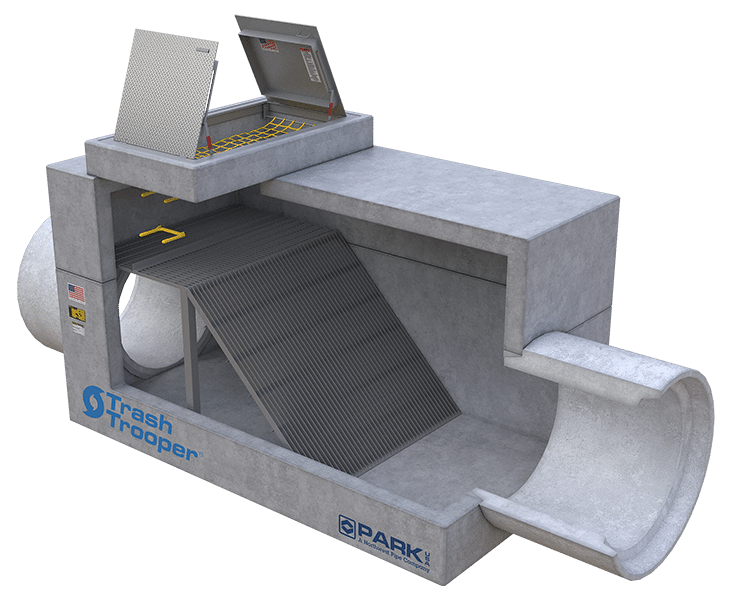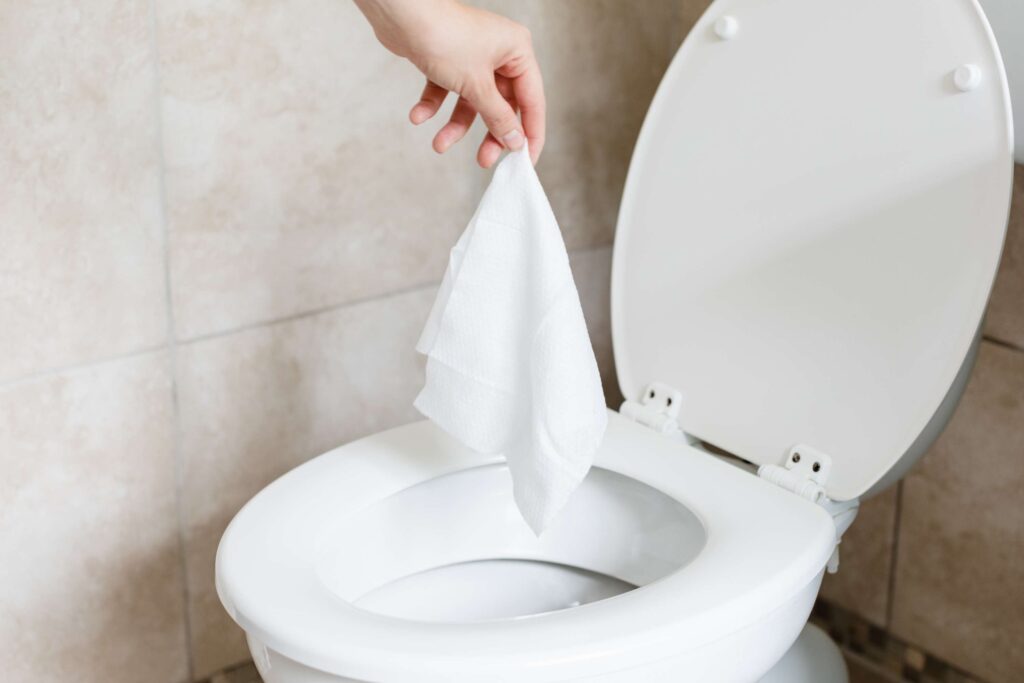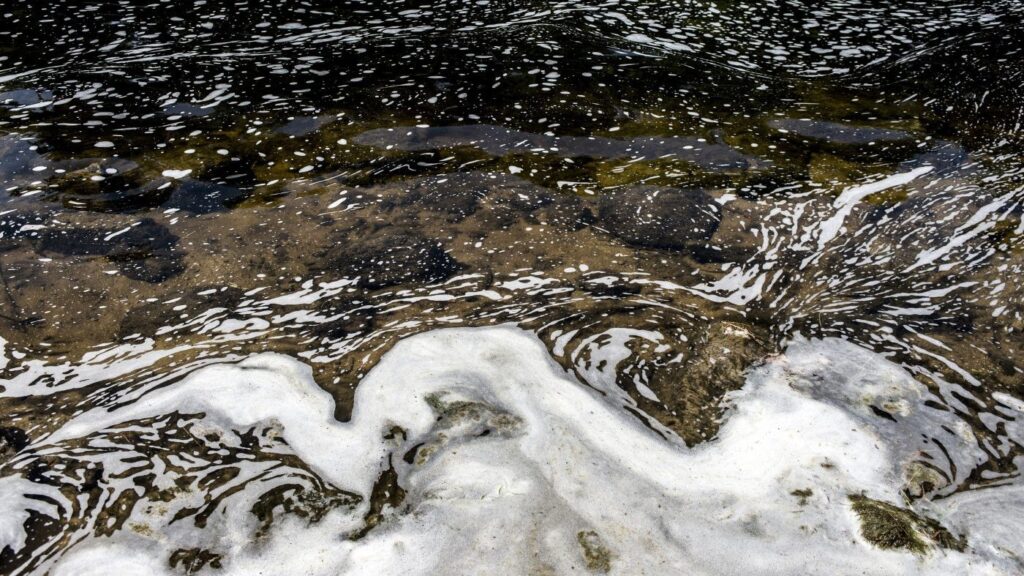Background
History of Clean Water Act – In 1972 the Clean Water Act (CWA) established the NPDES permit program to address water pollution by regulating point sources that discharge pollutants to waters of the United States.
The 1987 Water Quality Act (WQA) added a section 402(p) to the CWA requiring EPA to develop and implement a storm water permitting program. The EPA developed this program in two phases (Phase I: 1990; Phase II: 1999). Those regulations establish NPDES permit requirements for municipal, industrial, and construction site storm water runoff. This permitting mechanism is designed to prevent stormwater runoff from washing harmful pollutants into local surface waters.
Phase I regulates storm water discharges from medium and large municipal separate storm sewer systems (MS4), construction activities of 5 acres or larger (or less than 5 acres if part of a common plan of development or sale), and industrial activities. To be regulated under Phase I, a MS4 must service a population of 100,000 or greater based on the 1990 census.
Phase II extends the regulations to storm water discharges from small MS4s, and construction activities that disturb equal to or greater than 1 acre of land (or less than 1 acre if part of a common plan of development of sale). To be regulated under Phase II, a MS4 is located within an urbanized area, based on the 2000 census, as defined by the Bureau of Census or designated by the NPDES permitting authority.
Under the CWA, the EPA authorizes the NPDES permit program to States, tribal, and territorial governments, enabling them to perform many of the permitting, administrative, and enforcement aspects of the NPDES program. In States authorized to implement CWA programs, EPA retains oversight responsibilities. Because 46 states and one territory are authorized to implement the NPDES program there is site specific variability in permit requirements between permit authorities.
Measured Water Quality Impairment
During the summers of 2008 and 2009, EPA evaluated 1,924 river and stream sites across the country, representing 1.2 million miles of rivers and streams to determine the national biological condition of our water bodies. Of the nation’s river and stream length, 46% is in poor biological condition, 25% is in fair condition, and 28% in good condition.
States assessed 1,107,002 of the nation’s 3.5 million miles of rivers and streams to determine if the water bodies were meeting state water quality standards. Of these assessed miles, 614,153 (55.5%) were identified as impaired, 5,550 (0.5%) were considered threatened, and another 487,299 (44 %) were rated good. The major pollutants identified include: bacteria, sediment, and nutrients such as phosphorus and nitrogen.
Stormwater runoff is generated from rain and snowmelt events that flow over land or impervious surfaces, such as paved streets, parking lots, and building rooftops, and does not soak into the ground. The runoff picks up pollutants like trash, chemicals, oils, and dirt/sediment that can harm our rivers, streams, lakes, and coastal waters. To protect these resources, communities, construction companies, industries, and others, use stormwater controls, known as best management practices (BMPs). These BMPs filter out pollutants and/or prevent pollution by controlling it at its source. The benefits of effective stormwater runoff management include:
- protection of wetlands and aquatic ecosystems,
- improved quality of receiving waterbodies,
- conservation of water resources
- protection of public health, and
- flood control.
Changes
Through the NPDES permitting program, States and the EPA are tightening the control of pollutants washing into water bodies, by use of best management practices (BMPs), to address poor water quality that continues to remain even though the CWA has made great progress.
For example:
EPA is requiring all industrial stormwater permits to electronically report compliance data by 2016 or as states data portals are operational, making compliance more transparent and enforceable. Texas Commission on Environmental Quality (TCEQ), starting December 2018, will be requiring the Phase II MS4, with populations of 100,000 or greater, to establish programs to control the discharge of floatables into their storm sewer system and to evaluate new and existing flood control management projects for their water quality impact.
Available BMPs
ParkUSA® has numerous control options for meeting industrial and MS4 permitting requirements, from oil and sediment interception, floatable collection and nutrient removal. Products include:
The TrashTrooper® family of floatable collection products are patented inline screening systems designed to collect and contain a wide variety of floatable pollution. TrashTrooper® serves as an effective BMP, limiting the quantity of harmful pollutants being discharged during and following rain events. Outfall structures with floatable collection screens are available to serve as water quality features to be used in flood control management projects.
The StormTrooper® family of hydrodynamic separation products are patented stormwater wet vaults specifically designed to intercept free oils, grease, total suspended sediments (TSS), debris, and other pollutants found in stormwater runoff. The StormTrooper® features enhanced gravity separation technology, which utilizes coalescing media plates (CMP) engineered to a performance prediction based on Stokes’s Law.
AquaSweep® Series are oil-water separators that utilizes an enhanced gravity separation method of oil from oil-water mixtures. They are designed for underground (direct-bury) or for aboveground (freestanding) applications dependent on model.
The NutriBasin® is a filtration device designed to remove dissolved nutrients (e.g. phosphorus and nitrogen) from stormwater runoff. It exhibits high removal rates, especially for phosphorous (above 90% removal). The unit also contributes to sediment and floatable retention. It consists of a concrete vault with top access hatchway, inlet and outlet pipe connections, and an engineered biofiltration media contained in removable cartridges.
Our Responsibility
ParkUSA® believes in water technology development to combine efficiency and environmentally friendly products. ParkUSA’s goal is to offer its customers sustainable green solutions that meet todays needs, as well as anticipated changes in regulations.
Contact us for more information and design assistance.






